
How to Use Mono 2.6W Class D Amplifier: Examples, Pinouts, and Specs
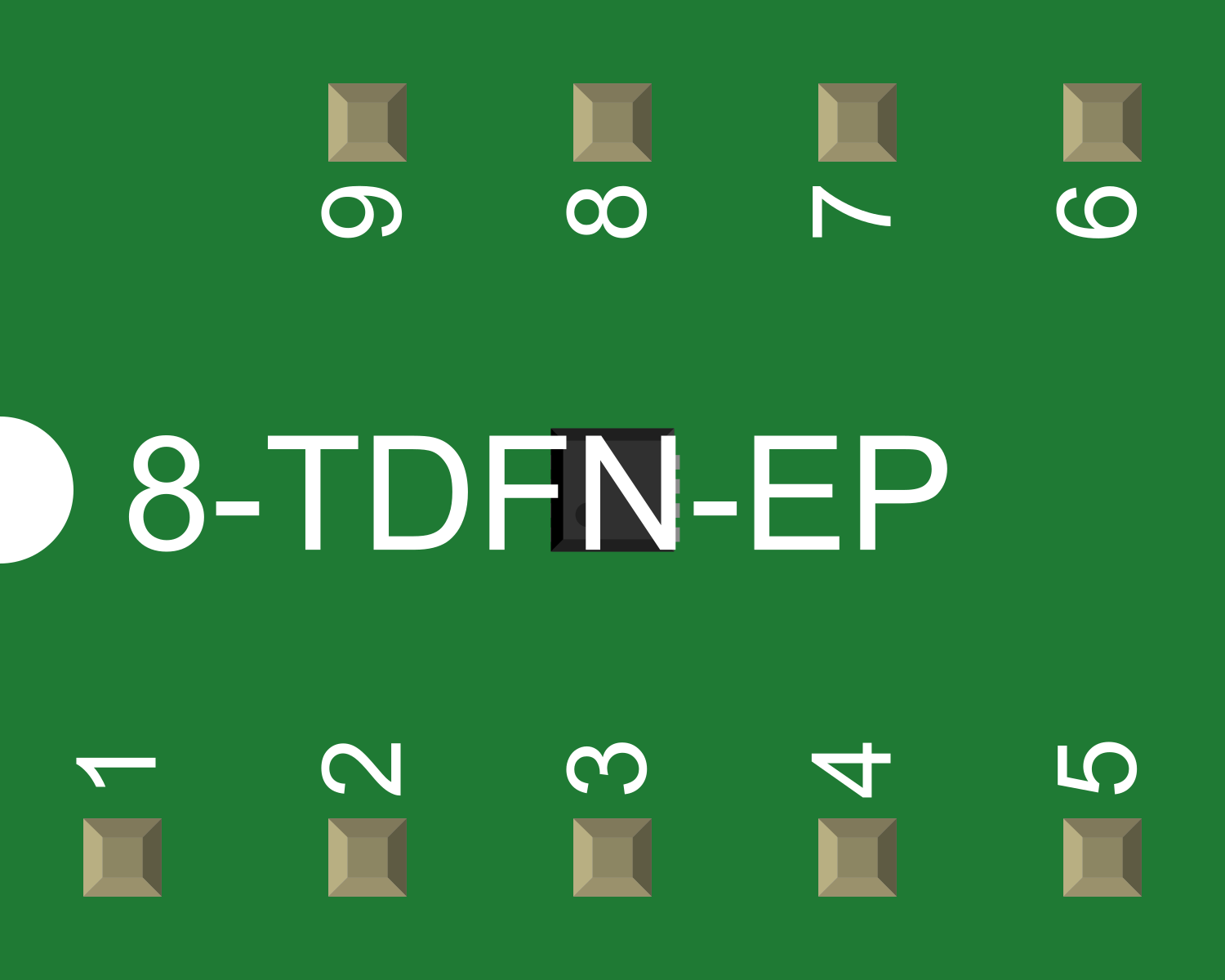
 Design with Mono 2.6W Class D Amplifier in Cirkit Designer
Design with Mono 2.6W Class D Amplifier in Cirkit DesignerIntroduction
The Mono 2.6W Class D Amplifier is a highly efficient audio amplifier designed to deliver a single channel of audio with a power output of 2.6 watts. It is ideal for portable and low-power applications where space and power consumption are critical factors. Common applications include small speakers for personal audio devices, DIY audio projects, and as a building block in more complex sound systems.
Explore Projects Built with Mono 2.6W Class D Amplifier
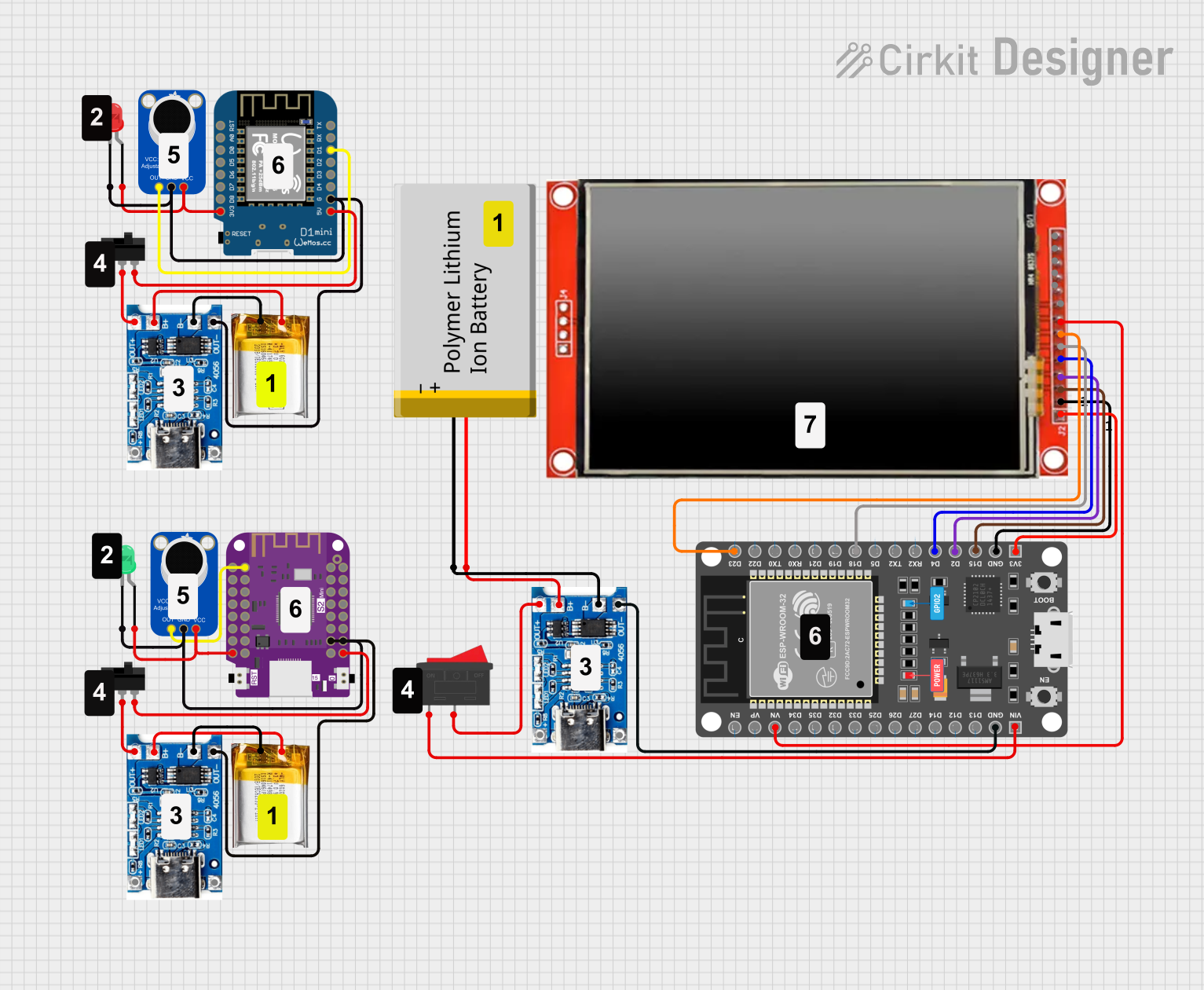
 Open Project in Cirkit Designer
Open Project in Cirkit Designer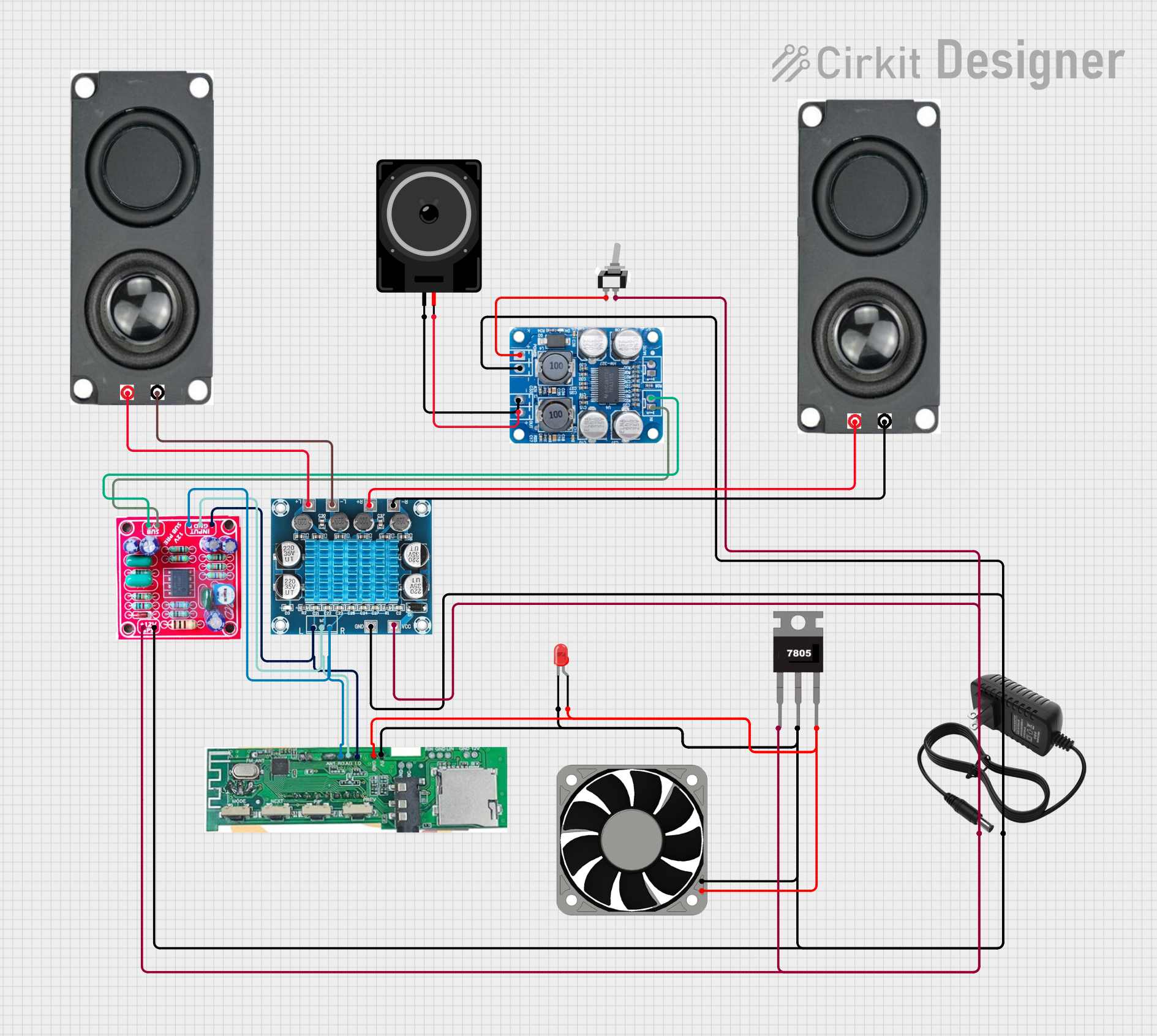
 Open Project in Cirkit Designer
Open Project in Cirkit Designer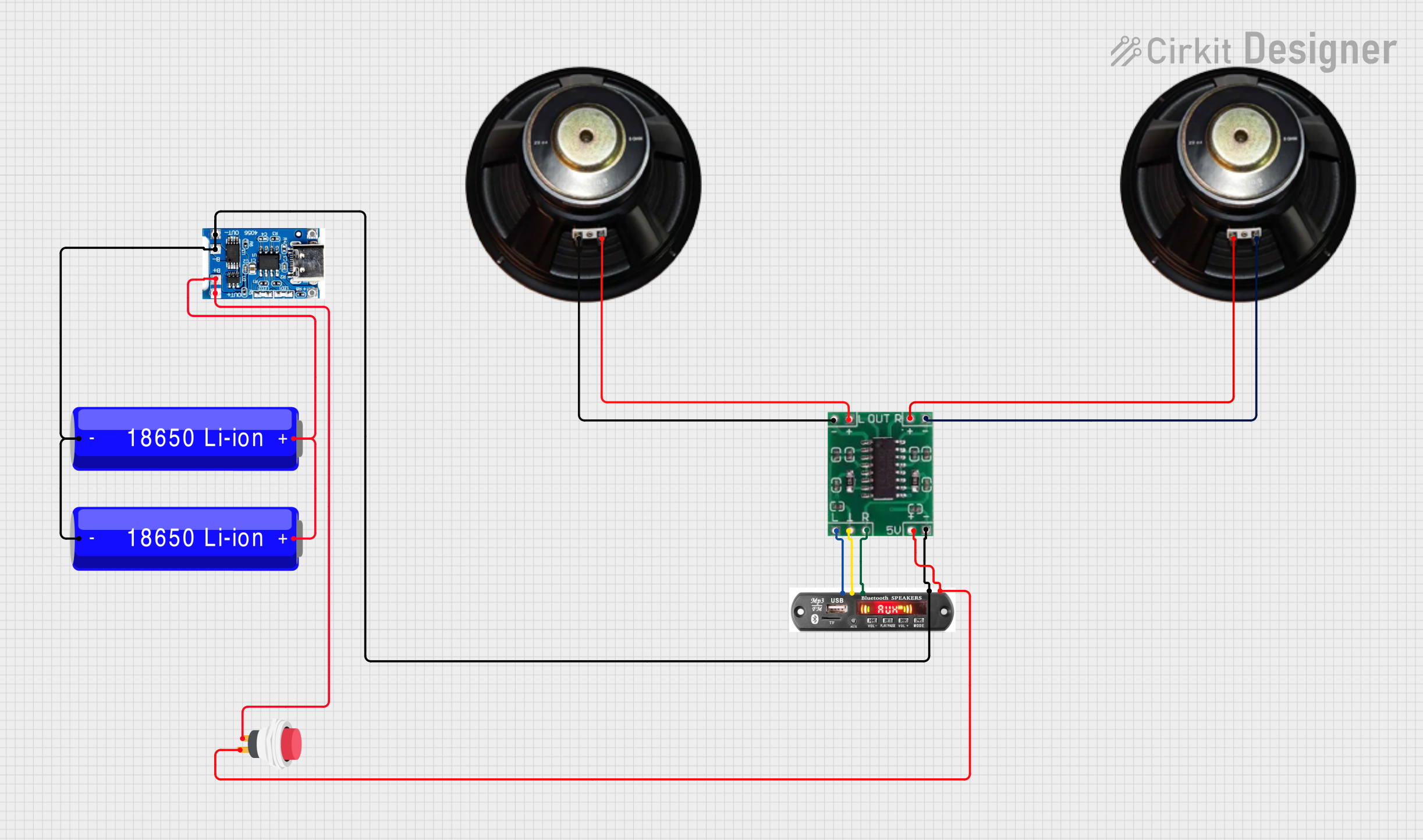
 Open Project in Cirkit Designer
Open Project in Cirkit Designer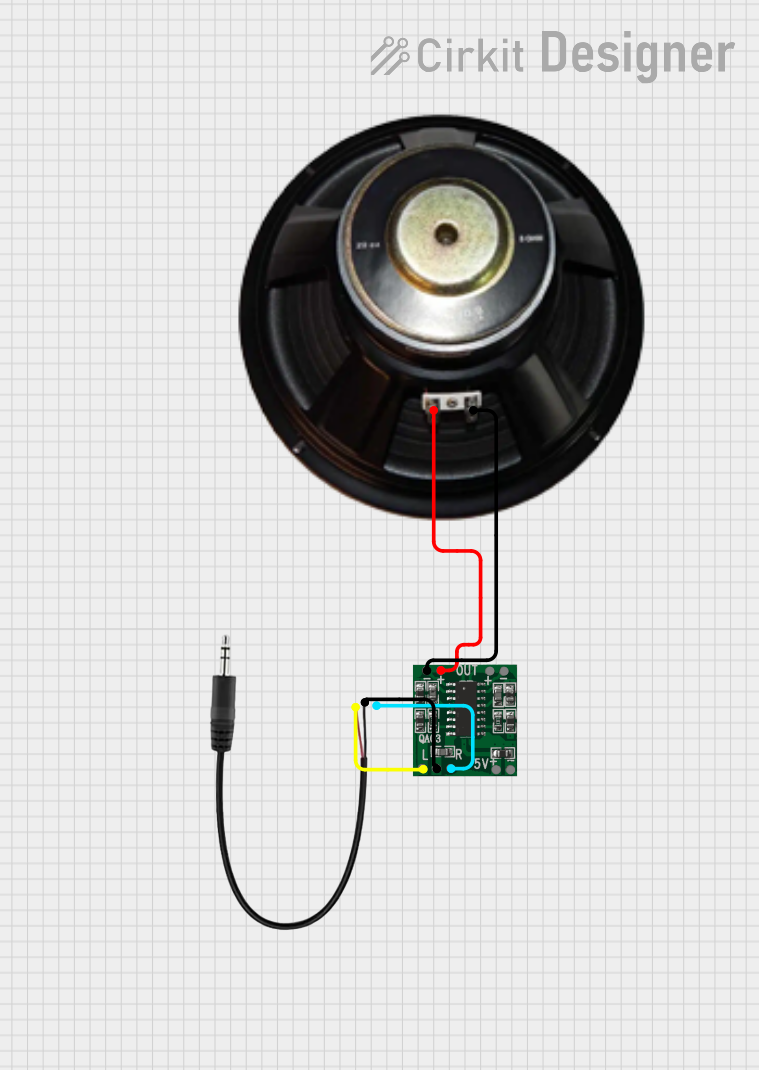
 Open Project in Cirkit Designer
Open Project in Cirkit DesignerExplore Projects Built with Mono 2.6W Class D Amplifier

 Open Project in Cirkit Designer
Open Project in Cirkit Designer
 Open Project in Cirkit Designer
Open Project in Cirkit Designer
 Open Project in Cirkit Designer
Open Project in Cirkit Designer
 Open Project in Cirkit Designer
Open Project in Cirkit DesignerTechnical Specifications
General Features
- Type: Class D Audio Amplifier
- Output Power: 2.6W (at 4Ω load and 5V power supply)
- Supply Voltage: 2.5V to 5.5V
- Efficiency: Up to 90%
- Load Impedance: Compatible with 4Ω to 8Ω speakers
- Signal-to-Noise Ratio (SNR): >90dB
- Total Harmonic Distortion (THD): <0.1%
Pin Configuration and Descriptions
| Pin Number | Pin Name | Description |
|---|---|---|
| 1 | VDD | Power supply (2.5V to 5.5V) |
| 2 | GND | Ground reference for power and signal |
| 3 | IN+ | Positive audio input signal |
| 4 | IN- | Negative audio input signal (for differential input) |
| 5 | GAIN | Gain selection input (connect to GND or VDD) |
| 6 | SD | Shutdown control (active low) |
| 7 | OUT+ | Positive speaker output |
| 8 | OUT- | Negative speaker output |
Usage Instructions
Connecting the Amplifier to a Circuit
- Power Supply: Connect the VDD pin to a clean power supply between 2.5V and 5.5V. Ensure that the power supply can deliver sufficient current for the amplifier and the connected speaker.
- Audio Input: Connect the audio source to the IN+ and IN- pins. For single-ended input, connect IN- to GND.
- Gain Setting: The GAIN pin can be used to select the amplifier gain. Connect it to VDD for high gain or GND for low gain.
- Shutdown Control: The SD pin can be used to put the amplifier into a low-power shutdown mode. Connect it to GND to enable the amplifier, or to VDD to disable it.
- Speaker Output: Connect a speaker with an impedance between 4Ω and 8Ω to the OUT+ and OUT- pins.
Best Practices
- Use decoupling capacitors close to the power supply pins to minimize noise.
- Keep audio input lines as short as possible to reduce interference.
- Ensure proper heat dissipation for the amplifier, especially at higher output volumes.
Example Arduino UNO Connection and Code
// Define the Arduino pin connected to the shutdown pin of the amplifier
const int shutdownPin = 2;
void setup() {
// Set the shutdown pin as an output
pinMode(shutdownPin, OUTPUT);
// Disable the amplifier by setting the shutdown pin high
digitalWrite(shutdownPin, HIGH);
}
void loop() {
// Enable the amplifier by setting the shutdown pin low
digitalWrite(shutdownPin, LOW);
// Play audio or perform other tasks
// Disable the amplifier if needed
// digitalWrite(shutdownPin, HIGH);
// Add a delay or other logic as needed
}
Troubleshooting and FAQs
Common Issues
- No Sound: Check power supply connections, ensure the SD pin is low, and verify that the audio input is connected correctly.
- Distorted Sound: Ensure that the input signal level is not too high, causing clipping. Also, check for proper speaker impedance matching.
- Overheating: Make sure there is adequate ventilation around the amplifier, and that the power supply is not exceeding the recommended voltage.
FAQs
Q: Can I use a 3Ω speaker with this amplifier? A: It is not recommended as it may cause the amplifier to overheat and fail.
Q: How do I increase the volume? A: The volume can be increased by adjusting the input signal level or by setting the GAIN pin to select a higher gain setting.
Q: What should I do if the amplifier is getting too hot? A: Ensure proper heat dissipation, check for any short circuits, and make sure the power supply voltage is within the specified range.
Remember to always follow the manufacturer's guidelines and safety instructions when working with electronic components.